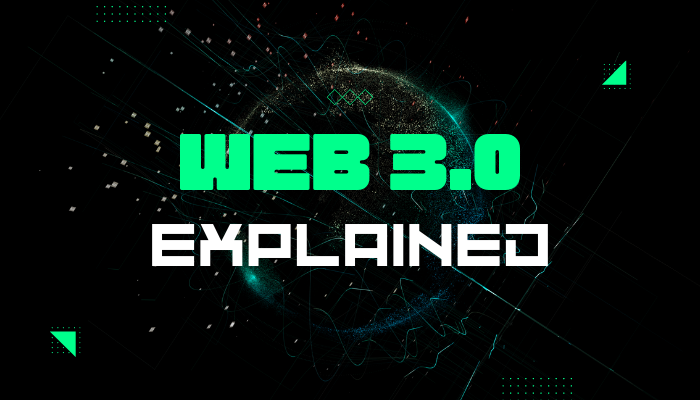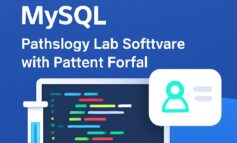Web development has come a long way over the years, and the evolution of the internet has brought us to the era of Web 3.0. This new age of the internet brings with it new technologies, including PHP, that make web development easier and more efficient. In this article, we will explore what Web 3.0 is and how it relates to PHP.
Introduction to Web 3.0
Web 3.0, also known as the Semantic Web, is the next generation of the internet. It’s a term used to describe the evolution of the internet from a collection of websites to a more intelligent and interconnected web of data. This means that the internet will not only be able to connect different pages, but also understand the meaning of the content, allowing it to be processed and shared more easily.
What is the Semantic Web?
The Semantic Web is a concept that has been around for many years, but with the advancements in technology, it’s becoming a reality. It’s a web of data that is linked and structured in a way that allows machines to understand and process it. This means that instead of just linking pages, the web will be able to connect and understand the meaning behind the content.
What are the benefits of Web 3.0?
The benefits of Web 3.0 are numerous. One of the main benefits is that it will be much easier to find and share information. This is because the web will be structured in a way that machines can understand, allowing them to better process and display data. Additionally, the Semantic Web will allow for more automation, making it easier to complete tasks such as online shopping or booking a flight.
Introduction to PHP
PHP is a server-side scripting language that is used to create dynamic web pages. It’s a popular language that is widely used in web development. PHP is known for its simplicity and ease of use, making it a popular choice for many developers.
What is PHP used for?
PHP is used for a wide variety of tasks in web development. Some of the most common uses for PHP include creating dynamic web pages, handling form data, and connecting to databases. Additionally, PHP can be used for tasks such as generating PDFs, sending emails, and creating image galleries.
What are the benefits of using PHP?
One of the main benefits of using PHP is its ease of use. PHP is a relatively simple language to learn and use, making it a popular choice for beginners. Additionally, PHP is an open-source language, meaning that it’s free to use and there is a large community of developers who can help with any issues.
How Web 3.0 and PHP Work Together
Now that we’ve covered the basics of Web 3.0 and PHP, let’s take a look at how they work together.
Semantic Web and PHP
One of the main benefits of the Semantic Web is that it allows for better data integration. This means that machines can easily understand and process data from different sources. PHP can be used to create applications that can access and process this data, making it easier to build intelligent applications that can provide users with personalized experiences.
Creating Dynamic Web Pages with PHP
PHP is commonly used to create dynamic web pages. With Web 3.0, the Semantic Web allows for better data integration, making it easier to create dynamic web pages that can pull data from different sources. This means that PHP can be used to create more intelligent and personalized web pages that provide users with a better experience.
Building Intelligent Applications with PHP
Web 3.0 and the Semantic Web allow for the creation of more intelligent applications. PHP can be used to build these applications
by providing the backend functionality for processing data and creating dynamic web pages. With the ability to access and process data from different sources, PHP can be used to build applications that provide personalized experiences for users.
Benefits of Using PHP for Web 3.0
There are many benefits to using PHP in the Web 3.0 era. Some of these benefits include:
Efficiency
PHP is known for its efficiency and speed. This is important in the Web 3.0 era, where data processing and integration are essential. PHP’s efficiency allows for faster processing of data, which leads to a better user experience.
Compatibility
PHP is compatible with a wide range of web servers and operating systems. This means that it can be used on almost any platform, making it a versatile language for web development.
Large Community
PHP has a large community of developers who are constantly improving and updating the language. This means that there is a wealth of knowledge and resources available for developers who are using PHP.
Security
Security is a major concern in the Web 3.0 era, and PHP has built-in security features that make it a safe choice for web development. Additionally, the large community of developers means that any security issues are quickly addressed and resolved.
Conclusion
Web 3.0 is the future of the internet, and PHP is an essential tool for building intelligent applications in this new era. By leveraging the power of the Semantic Web and the efficiency of PHP, developers can build applications that provide personalized experiences for users.
FAQs
- What is the Semantic Web? The Semantic Web is a web of data that is linked and structured in a way that allows machines to understand and process it.
- What is PHP? PHP is a server-side scripting language that is used to create dynamic web pages.
- What are the benefits of Web 3.0? The benefits of Web 3.0 include better data integration, automation, and improved search and sharing of information.
- Why is PHP a good choice for Web 3.0 development? PHP is efficient, compatible, has a large community of developers, and built-in security features that make it a safe choice for Web 3.0 development.
- What kind of applications can be built with PHP in the Web 3.0 era? PHP can be used to build applications that provide personalized experiences for users, by processing and integrating data from different sources. This includes intelligent applications for tasks such as online shopping and booking flights.




Leave a Reply